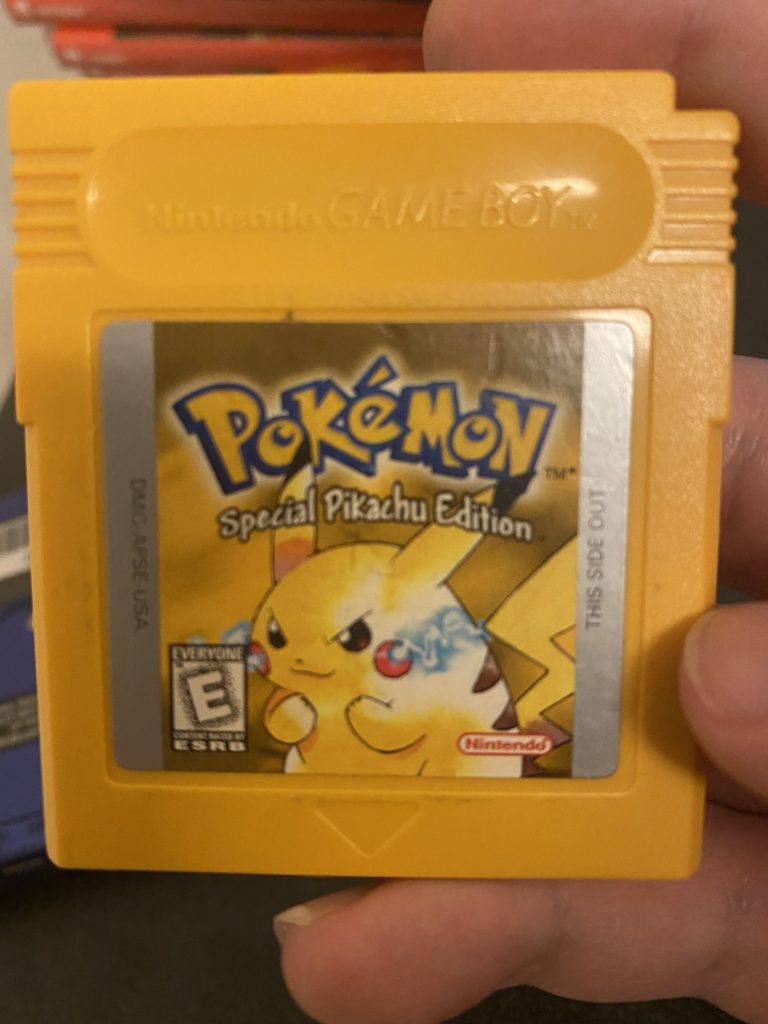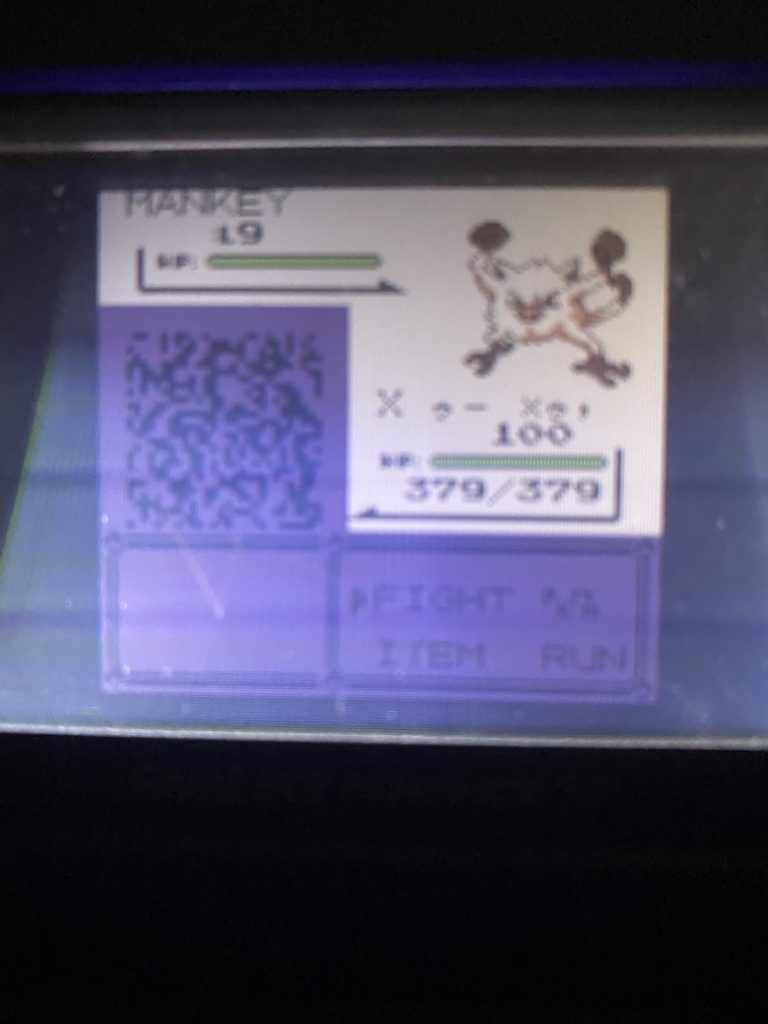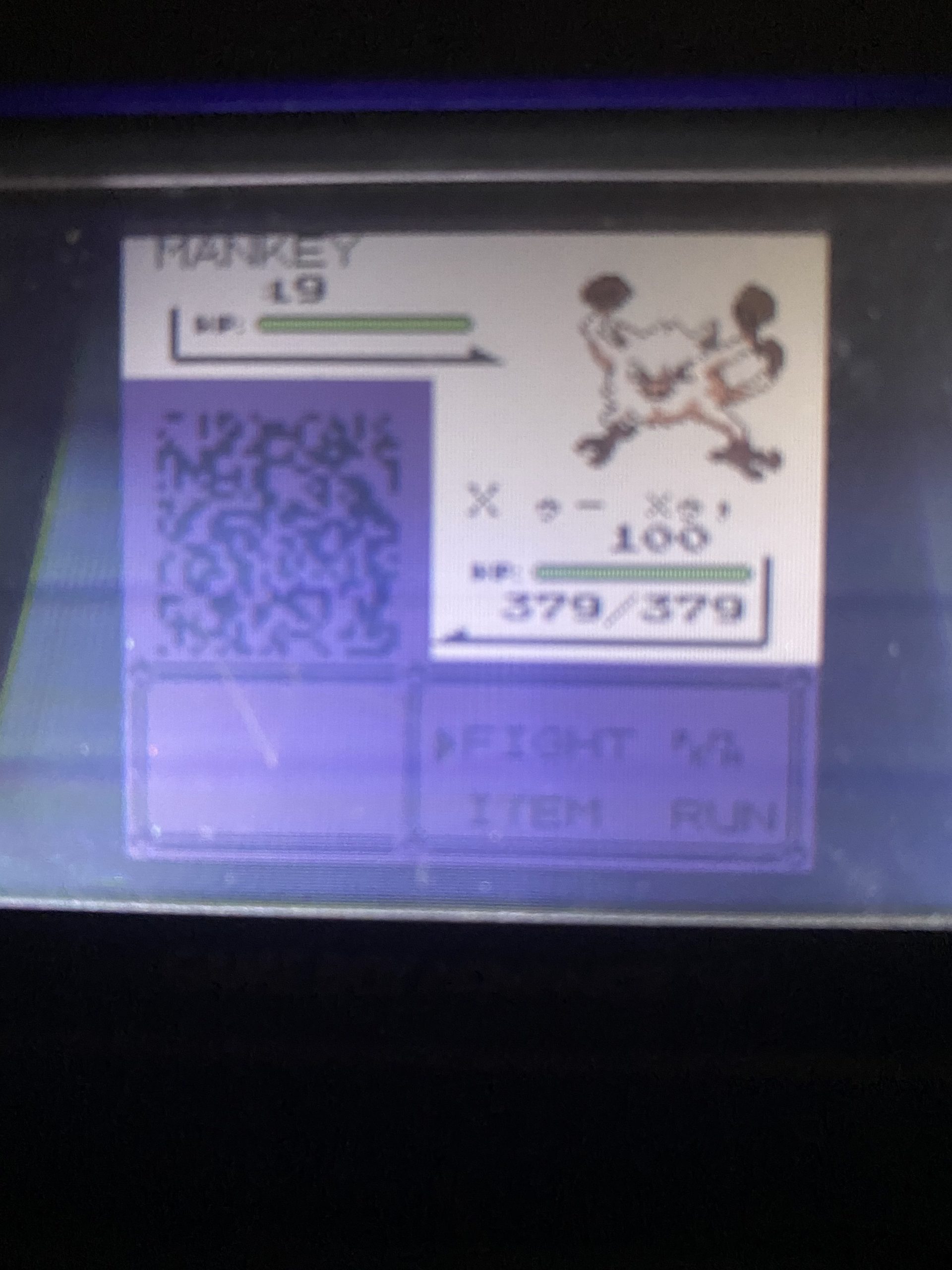Pokemon Yellow was the last game made in the first generation of Pokemon, following Red and Green (and later Blue) in Japan, and Red and Blue in America. Unlike Red, Green, and Blue, Yellow was a slightly different version of the first generation’s story, with the chief difference being the existence of the main character’s Pikachu, which followed the player around as an active sprite and could be interacted with.
This game is fascinating because of its context. Pokemon Yellow was created as a response to the meteoric rise of the Pokemon anime, which was started in the intervening couple of years between Red/Green/Blue’s 1996 Japan release and 1998 when Yellow was developed. The Pokemon anime is at this point a fairly universally recognized piece of media, but the part most pertinent to Yellow’s development is that the main character of the anime, Ash, starts his journey with a highly combative Pikachu who refuses to be locked in a Poke Ball (the carrying device for Pokemon, from which the series derives its name: “Pocket Monsters” as a reference to the carrying balls being small enough to fit in one’s pocket) and instead follows Ash or rides as a passenger on his shoulder. The anime was a smash success right away, and development quickly followed on a game that contained recognizable elements of the show within the existing framework of Red/Green/Blue.
Game Freak knew what was going to sell. The game’s box art doesn’t read “Pokemon Yellow,” at least not directly; rather, the first thing a prospective player sees is “Pokemon: Special Pikachu Edition.” The anime set up Pikachu to be the face of the Pokemon series, but Yellow was the game that solidified it as the mascot. (Have a look at the image; even though “Yellow Version” is on the box art, it’s completely absent from the cartridge art.)

This game was the first to implement the mechanic of a Pokemon following the player character around. It wouldn’t appear again for quite some time, but it made a return in the fourth generation of Pokemon games (Diamond/Pearl, Platinum, HeartGold/SoulSilver) and was heralded as a fan favorite mechanic, so much so that it’s being brought back again in the upcoming ninth generation games (Scarlet/Violet), hopefully to stay. It’s not a sure thing, but one has to wonder if the mechanic would have been present in the fourth generation if it hadn’t been introduced with Yellow.
The game aside from the added Pikachu is largely the same as the rest of the generation. The usual starters from the other games are all obtainable, unlike in those games where the player could only get one per playthrough, but the story is the same from end to end. (Notably, Pikachu, as Yellow’s starter, is no longer otherwise obtainable; in Red/Green/Blue, it was fairly common in the game’s first dungeon, Viridian Forest.) Despite the definite similarity to the already-released games, Yellow was more popular and more well-received than the others at its launch; I believe it owes that boost in popularity to the references to the anime and the added character of the player’s Pikachu.
If there is one glaring negative about Pokemon Yellow (and its predecessors), it’s that the game is barely stable. Any poking around the edges trying to find a glitch will probably come up with something. Programming a game for a console as limited in power as the Game Boy, especially one as novel for its time as the original Pokemon games, could not have been easy, but the games are riddled with bugs and Yellow, for coming out two years after Red/Green/Blue, didn’t do very much to patch these glitches. In fact, I think Yellow might be even less stable in some places than the other games in the first generation. (When these games were re-released on the 3DS Virtual Console near the end of its lifespan, none of the bugs were fixed. I know this, because I did a bunch of them myself as a test and all of them worked. I glitched the game into giving me three Mews, both on the original cartridge and on Virtual Console.)
To end this review, here’s a personal illustration of the game’s bug issue. The image below is of the first battle I got into when revisiting the game for the first time in years in the lead-up to this review.

I don’t know what my Pokemon is, I don’t know how I got it, the lower half of the screen is a lovely purple shade, and I don’t know how all of this can be done to a game without irreparably breaking it.

